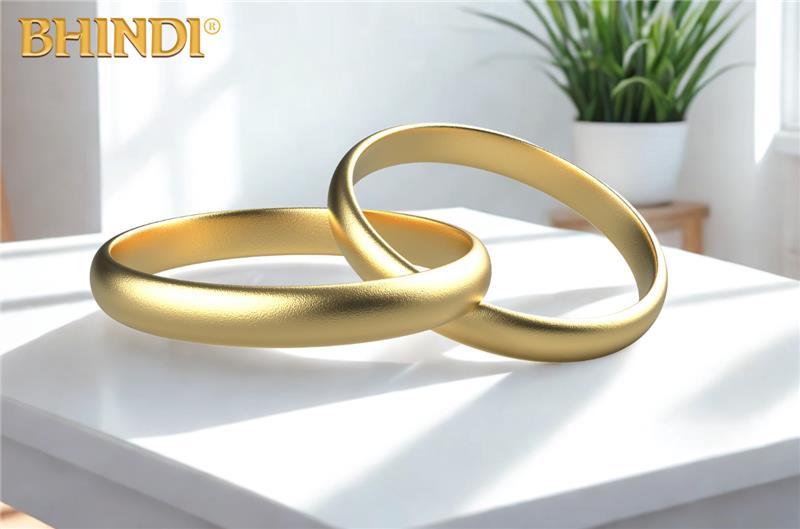Understanding Gold Purity and Durability
Pure gold (24 karat) is actually very soft and, therefore, malleable, so while it is beautiful, it’s not suitable for everyday wear. That is why gold wedding bands are available in various karats, which represent the percentage of pure gold combined with other metals to make an alloy.
The Karat system is simple:
- 24K gold is 100% pure gold
- 18K has 75% gold
- 14K has 58.3% gold
- 10K has 41.7% gold
The lower the karat number, the less pure gold, and the more other metals in the mix.
These other metals are not just fillers. They serve a very important purpose. They give strength and durability and, at times, change the color of the finished product. That is why lower karat gold wedding bands are more resistant to scratches and dents.
The Sweet Spot - 14K Gold Wedding Bands
14K gold is the ideal choice when searching for the perfect balance between gold content and durability for wedding bands. 14K gold is a resilient alloy that can withstand daily activities, and it is made up of 58.3% gold mixed with stronger metals like silver, copper, zinc, and nickel.
Yellow gold wedding bands in 14K provide that classic, warm gold appearance, yet they offer much better scratch resistance over higher karat options. This makes them most appropriate for the hands-on person or someone living an active lifestyle.
14K yellow gold is a little less intense compared to 18K yellow gold, but not many people can actually tell the difference with a quick glance. However, what they easily notice is the way a 14K ring keeps its shape and finish through the years.
18K Gold - Luxury with Reasonable Durability
For those who like the richer gold shades and can be more careful with their rings, an 18K gold wedding band is a fantastic and luxurious choice. These rings feel slightly heavier on the finger with 75% pure gold and have a pronounced, beautiful yellow color.
Although not as durable as 14K, 18K gold wedding rings are still strong enough for everyday wear. This karat level is also popular because it has a more vibrant appearance, especially with yellow gold wedding bands, where the rich gold color really shows through.
Keep in mind that 18K gold will be a bit more care-sensitive to scratches over time. This might not be the ideal choice for those who have an active lifestyle.
Classic Wedding Bands That Last
The beauty of classic wedding bands is in their simplicity and timelessness. A plain gold band has no design elements that would eventually be out of style. There is also no concern of it catching anywhere on clothes. The simplicity also makes for durability. The less detailed a piece of jewelry is, the less likely it is to suffer damage.
One of the reasons why many couples go for classic yellow gold wedding bands is that they look good traditionally. These rings are simple, smooth, and comfortable to wear every day and are less likely to snag on things.
Durability also depends on the width of the band. Thinner bands can be stylish, but a slightly wider band (4-6mm) offers more integrity. This does not mean the band has to be clunky; it means thinner bands could bend down the road more easily.
You May Also Like: Wedding Jewelry: Your Guide To Creating The Perfect Look
To Conclude
When selecting gold wedding bands, think about your lifestyle, your style, and your budget. For most couples, 14K gold is a good balance of durability, appearance, and value. Those prioritizing appearance might prefer 18K.
The most important thing is not karat or design but the meaning that these classic wedding bands will carry with you through life’s adventures.
FAQs
Q1. Why does my gold wedding band leave a black mark on my finger?
This is a common problem that occurs when metals in the gold alloy (copper) react with acids in your skin or in the products you use. Lower karat rings are more prone to this, and it doesn’t mean the ring is defective. Cleaning the ring and your finger regularly can help reduce these marks.
Q2. Can I shower or swim with my gold wedding band on?
Gold won’t rust, but chlorine in pools and chemicals in soaps will dull the shine and damage gold over time. Saltwater can also be harmful. Gold wedding rings should be removed before swimming in chlorinated or salt water, but occasional exposure to chlorinated or salt water during showering is usually fine.

